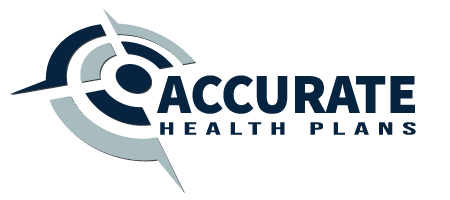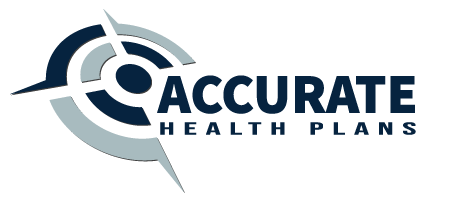Are you Eligible for a Medicare Prescription Drug (Part D) plan?
Accurate Health Plans is independent, we can help you choose the best possible Part D prescription drug plan and see if you are Medicare Part D eligible. Choosing the right Medicare Prescription drug plan can be very confusing. Sometimes there can be thousands of dollars difference from one plan to another. With so many plans to choose from, understanding coverages, deductibles and formularies, you could make a mistake that you will have to live with until next Annual Election Period in October 15th – December 7th.
The reason it is so difficult is because Medicare Prescription plans change their pricing, coverages and formulary every year. So it’s imperative important to stay up to date on your plan and formulary. Your prescription plan should be reevaluated each year during the open enrollment period.
Call or click today to get started with your drug plan comparison.

What is a Medicare Prescription drug plan?
Medicare Prescription Drug Plans (sometimes called “PDPs”) add prescription drug coverage to Original Medicare, some Medicare Private Fee-for-Service (PFFS) Plans, some Medicare Cost Plans, and Medicare Medical Savings Account (MSA) Plans.
How do I get prescription coverage with Medicare?
Give us a call at (1-800-235-0876)
- We will your current coverage
- Let us know what medications you take,
- The dosage and times per day
- We will look to see which plan is best for you for the upcoming year.
Medicare Part D is what covers prescription drugs and carries a monthly premium. If a Medicare beneficiary doesn’t enroll in Part D on time, a penalty will be added to their premium moving forward. Penalties are waived in instances that your client has existing credible coverage.
Part D plans follow the annual election period (AEP) schedule and can be changed every year between October 15th and December 7th.
It’s very important to review these plans annually because the tiers and copay’s can change.
What does Medicare Part D drug plans cover?
Each plan that offers prescription drug coverage through Medicare Part D must give at least a standard level of coverage set by Medicare. Plans can vary the list of prescription drugs they cover (called a formulary) and how they place drugs into different “tiers” on their formularies.
List of covered prescription drugs (formulary)
Most Medicare drug plans (Medicare Prescription Drug Plans and Medicare Advantage Plans with prescription drug coverage) have their own list of what drugs are covered, called a formulary. Plans include both brand-name prescription drugs and generic drug coverage. The formulary includes at least 2 drugs in the most commonly prescribed categories and classes. This helps make sure that people with different medical conditions can get the prescription drugs they need. All Medicare drug plans generally must cover at least 2 drugs per drug category, but plans can choose which drugs covered by Part D they will offer.
The formulary might not include your specific drug. However, in most cases, a similar drug should be available. If you or your prescriber (your doctor or other health care provider who’s legally allowed to write prescriptions) believes none of the drugs on your plan’s formulary will work for your condition, you can ask for an exception.
A Medicare drug plan can make some changes to its drug list during the year if it follows guidelines set by Medicare. Your plan may change its drug list during the year because drug therapies change, new drugs are released, or new medical information becomes available.
Plans offering Medicare prescription drug coverage under Part D may immediately remove drugs from their formularies after the Food and Drug Administration (FDA) considers them unsafe or if their manufacturer removes them from the market. Plans meeting certain requirements also can immediately remove brand name drugs from their formularies and replace them with new generic drugs, or they can change the cost or coverage rules for brand name drugs when adding new generic drugs. If you’re currently taking any of these drugs, you’ll get information about the specific changes made afterwards.
For other changes involving a drug you’re currently taking that will affect you during the year, your plan must do one of these:
Give you written notice at least 30 days before the date the change becomes effective.
At the time you request a refill, provide written notice of the change and at least a month’s supply under the same plan rules as before the change.
Note
For 2019 and beyond, drug plans offering Medicare prescription drug coverage (Part D) that meet certain requirements also can immediately remove brand name drugs from their formularies and replace them with new generic drugs, or they can change the cost or coverage rules for brand name drugs when adding new generic drugs. If you’re taking these drugs, you’ll get information about the specific changes made to generic drug coverage afterwards.
You may need to change the drug you use or pay more for it. You can also ask for an exception. Generally, using drugs on your plan’s formulary will save you money. If you use a drug that isn’t on your plan’s drug list, you’ll have to pay full price instead of a copayment or coinsurance, unless you qualify for a formulary exception. All Medicare drug plans have negotiated to get lower prices for the drugs on their drug lists, so using those drugs will generally save you money. Also, using generic drugs instead of brand-name drugs may save you money.
Generic drugs
The Food and Drug Administration (FDA) says generic drugs are copies of brand-name drugs and are the same as those brand-name drugs in:
- Dosage form
- Safety
- Strength
- Route of administration
- Quality
- Performance characteristics
- Intended use.
Generic drugs use the same active ingredients as brand-name prescription drugs. Generic drug makers must prove to the FDA that their product works the same way as the brand-name prescription drug. In some cases, there may not be a generic drug the same as the brand-name drug you take, but there may be another generic drug that will work as well for you. Talk to your doctor or another prescriber about your generic drug coverage.
Tiers
To lower costs, many plans offering prescription drug coverage place drugs into different “tiers” on their formularies. Each plan can divide its tiers in different ways. Each tier costs a different amount. Generally, a drug in a lower tier will cost you less than a drug in a higher tier.
Here’s an example of a Medicare drug plan’s tiers (your plan’s tiers may be different):
Tier 1—lowest copayment : most generic prescription drugs
Tier 2—medium copayment: preferred, brand-name prescription drugs
Tier 3—higher copayment: non-preferred, brand-name prescription drugs
Specialty tier—highest copayment: very high cost prescription drugs
In some cases, if your drug is in a higher (more expensive) tier and your prescriber thinks you need that drug instead of a similar drug on a lower tier, you can file an exception and ask your plan for a lower copayment.
Remember, this is only an example—your drug plan’s tiers may be different.

